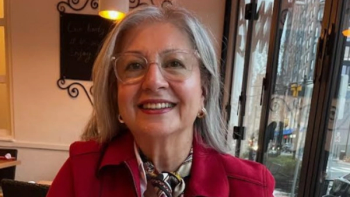
Major Subtypes of NSCLC
Transcript:Mark A. Socinski, MD: The terms non-small cell and small cell really date back to the 1970’s when they were considered as the 2 major types of lung cancer. There were some differences in terms of how they behaved, and some differences in terms of which one occurred in smokers—small cell being more common, non-small cell not necessarily linked to smoking. Also, treatment was different. And so we got into the habit of distinguishing the cancer as small cell versus not small cell (hence the term non-small cell).
In non-small cell, there are 3 major subtypes: squamous, adenocarcinoma, and large cell carcinoma. Small cell, again, from a treatment point of view, is very different in terms of how we manage it. So it’s incredibly important that the initial biopsy be sufficient to distinguish between small cell and non-small cell.
Edward S. Kim, MD: There are multiple subtypes in the landscape of lung cancer, and sometimes this can be very confusing because you hear all of this different terminology. It’s really important to just break it up into some very discrete buckets.
Lung cancer—that’s the name of the disease. Then we have the first subtype, which divides it into small cell and non-small cell, which is a really sophisticated way of classifying them because back 40, 50 years ago, people would look under the microscopes and they would see really small cells that were hyperpigmented, or had a lot of coloring in them, and other cells that weren’t. So that’s how we got this very broad classification between small cell and not so small cell. And then, within the non-small cell realm, there are other subtypes based on what shape the cells look like. There’s one called adenocarcinoma. There’s another type called squamous cell carcinoma. These are all subtypes of non-small cell, which are all part of the lung cancer classification. That is important to know.
A lot of what we try to do when we diagnose and perform tests to determine a diagnosis is to inform your clinician, your doctor, of what types of therapy should be done. So everything leads up to the clinic. Anything a pathologist is doing, anything a radiologist is doing (all of those folks)—this is where we need this information to help us.
Now, what’s one of the most relevant things? Once we’ve classified what your diagnosis is, whether it’s a squamous cell, adenocarcinoma, or small cell, then the clinician, your provider, has to sit and discuss what the best therapy is with you. Now, in the past, it’s just been a method of choosing your chemotherapy—chemotherapy doublets, either carboplatin or cisplatin, with a different drug. We’ll get into terminologies and that later in this program, but for early on, after we get a diagnosis (just like in breast cancer), we need to have markers—biomarkers. These are characteristics that exist in the tumor that help a clinician decide what the best therapy to match to is. And that’s as close as we have come to this “precision medicine” that exists. And that’s really important for anyone to know when they’re facing this diagnosis and meeting with their clinician, their provider, for the first time.
It’s important to realize that although we’re trying to break these classifications of lung cancer into buckets, there are a bunch of different subtypes. Adenocarcinoma is the most popular one under nonsquamous, non—small-cell lung cancer. Yes, that’s a mouthful. But there are also things like large cell, and neuroendocrine. If you go to a textbook, which I’m not going to recite for you today, there are other histologies, as we call them, or classifications, under nonsquamous, non–small-cell lung cancer.
Transcript Edited for Clarity





